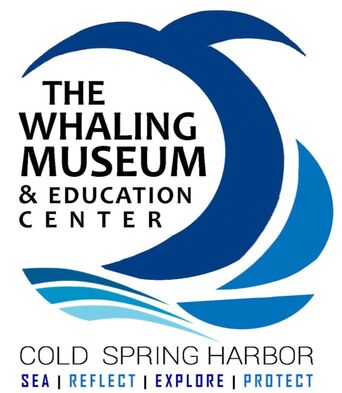|
As we prepare for our event on Sunday, February 4 from 11-4pm, we welcome you to our enchanting annual event -- in rhyme. The event title "Narwhal Ball" was first conceived by Anthony Sarchiapone, the museum's Board President. The idea grew from an original event idea for an adult crowd, and shaped over time into a wintry celebration for children, complete with crafts, ice cream and an appearance by Elsa -- and, hopefully, learning a thing or two about arctic whale species! We took inspiration from a previous frosty event the museum held at the height of the "Frozen" film craze. In 2023, our museum team was delighted to welcome 400 visitors at our new event and see such positive interest from the community. This week, we have been spending our time suspending snowflakes with fishing line around the exhibits, moving tables, plugging in tinkly lights, hanging up streamers in the workshop, and getting ready for you to visit. In the meantime, Anthony thought he would share a poem he wrote that imagines a magical place where narwhals really do celebrate! Let’s all go to the narwhal ball, Where narwhals dance In the narwhal hall. Where snowy friends come together And no one minds the frosty weather.
By Anthony Sarchiapone The Whaling Museum Receives Significant Collection of 19 Ships in a Bottle From Kappel Family8/22/2023 When Jeff Kappel’s father passed away this May just a few months shy of his 100th birthday, he was faced with the decision of rehoming his father’s extensive collection of Ships in a Bottle. Jeff chose 19 items to donate to The Whaling Museum’s collection, saying “I want it seen. My father collected for years and loved sharing his collection with people, and I want to continue that.” The craft of ship in a bottle is a finely crafted and challenging folk art. The earliest surviving models date to the late 1700’s. Popularized by both American and European mariners who needed to pass long hours at sea, the creator would use a discarded bottle, bits of wood and other materials to create a tiny yet accurate model of a sailing ship. With great patience for handiwork, the model was created with complete but collapsible rigging, which was inserted folded into the neck of a bottle, set into a painted diorama, and had the sails raised. Each ship in a bottle is unique, and was often created as a gift or souvenir. Retired seamen also maintained their skills by engaging in the hobby. Lester Kappel spent a lifetime collecting ships in a bottle, some of which were loaned years ago to the Whaling Museum for a special exhibition about the craft.
A selection of ships in a bottle from this collection will be exhibited in the Museum’s craft workshop by September 2023 and will be on display thereafter. Summer hours at the museum are Tue-Sun, 11-4pm. Beginning September 3rd, fall hours start and the Museum gallery hours change to Thu-Sun, 11-4pm.
by Claire Spina |
| New York artist Hulbert Waldroup captures Concer’s heroism in a two-sided portrait painted on salvaged ship wood. One side shows Concer at work, bravely aiming his harpoon at a whale. On the opposite, he stands along a shore, grinning as he extends a hand towards us. Waldroup’s piece allows viewers to interact with Concer in two different environments, one that demonstrates his remarkable courage and professional success, and one that emphasizes the valuable spirit of Concer as an individual, beyond his achievements at sea. In employing this duality, Waldroup communicates the importance of Concer’s contributions, without reducing him to a token or statistic. “I give the viewer the opportunity to find and reshape the spaces where they find themselves,” says Waldroup in his artist statement. His rendition of the story acknowledges the unlikely circumstances of Concer’s success while maintaining a sense of optimism and endurance that bears relevance today. This balance is a persistent aspect of “Whalers of the African Diaspora.” Despite the heavy subject matter, an inspiring narrative runs through the exhibition, highlighting the unique contributions of every whaler, innovator, and artist involved. The show extends beyond those at sea, honoring the impact of African Americans on spirituality, culture, labor laws and innovation. Each artifact on display – from ship parts to scrimshaw carvings– are powerful symbols of Black whalers’ presence in the industry, both on and offboard. As Grier-Key puts it, “My hope is that the viewer comes away with new knowledge that is a deeper understanding of not just remarkable achievements but the ordinary spirit of service and justice that is within all of us to bring about change.” Given the show’s inspiring subjects and stories, Grier-Key’s statement rings true. By celebrating those who changed the course of the whaling industry, “Whalers of the African Diaspora” offers everyone the opportunity to learn, grow, and make a difference. |
While developing content for our new special exhibit, "From Sea To Shining Sea: Whalers of the African Diaspora," museum staff came across a recipe for for an oversized ginger cookie dating back to colonial times -- the Joe Frogger Cookie.
The cookie's creation is attributed to Lucretia Young, who was born in 1772 to two formerly enslaved people in Marblehead, Massachusetts, a seaport. She married Joseph Brown, the son of an African American mother and Wampanoag Nation father, and who had been born into slavery to Rhode Island sheriff slaveowner Beriah Brown II. Little is known of Joe's early years, but he enlisted as a soldier in the Revolutionary war to take the place of his enslaver's son, who Joe said "left the company to go privateering." Beriah promised his liberty if he would serve out his son's time. Joe completed his enlistment in 10 months and 20 days, serving with 60 other men, and left the war a free man.
During a time when unemployed freed Black people had to leave Marblehead, Lucretia and Joe operated a successful and busy tavern serving sailors. The building still stands today.
There, Lucretia mixed sea water, rum, molasses, and spices to create a large, gingerbread-like cookie which sailors bought by the barrel - The Joe Frogger. While the exact origin of the name is unclear, as legend has it, she named the cookie after her husband and the nearby pond's wide, flat lily pads. Because the cookies lacked milk or eggs, the rum-preserved cookies had a long shelf life suitable for sea voyages, and were popular with fishermen and sailors.
Joe and Lucretia were free people and property owners in a time when most African Americans were enslaved, yet its star ingredients— rum and molasses—are inextricably tied to the brutality of slavery.
| Recipe: Joe Frogger Cookies 3½ c flour | 1½ tsp sea salt 1½ tsp ground ginger | ½ tsp ground cloves ½ tsp grated nutmeg ¼ tsp allspice | 1 tsp baking soda 1 c molasses | 1 packed cup brown sugar 2 tbsp white sugar ½ c room temp butter, margarine, or shortening 2 tbsp dark rum 1/3 c hot water Mix dry ingredients; set aside. Beat together the molasses, brown sugar, and your chosen fat until fluffy. In separate bowl, combine hot water and rum. Stirring continuously, alternate adding the dry ingredients and the water-and-rum mixture to the sugar-and-molasses mixture. Continue stirring as the mixture coheres into a dough. Cover and refrigerate for at least two hours and up to a day. Preheat oven to 375. Roll out the dough on parchment paper sprinkled with sugar until it’s about ¼ of an inch. Use an empty coffee can or a wide jar to cut out circles in the dough (traditional Joe Froggers are large, like lily pads). Bake on greased or parchment paper–lined baking trays for 10 to 12 minutes until beginning to brown on the edges, and are still slightly soft in the center. Share your pics @ cshwhalingmuseum! |
This year, we are resharing several amazing facts about these leviathans' hardest-working organ.
Between American Hearth Month and Valentine's Day, you probably have hearts of the mind this February. Check out these 5 amazing heart facts of a Blue Whale.
- 400 lb in weight! Yours weighs less than a pound!
- 2 miles .... that's how far away you can detect its heartbeat underwater.
- During dives, their heartbeat is the slowest in the world. At the surface, a whale's heart pumps 25-37 times a minute. When diving, the heart slows to 4-8 beats a minute, with an an extreme low of only 2 beats. This drastic measure saves oxygen.
Bob's great-great grandfather, Benjamin Archer (1825-1868), sailed as a greenhand, or an inexperienced crew member on Cold Spring Harbor's whaleship, the Monmouth.
According to FindAGrave, Benjamin was an immigrant from England, and he married Phebe Wall (1827-1898) from Ireland. At the young age of 17, he signed on as a greenhand on the bark Monmouth, as shown in the Museum's archives.
Benjamin sailed on the Monmouth from 1842-1843, which journeyed to the Indian, North Atlantic, and South Atlantic oceans. The captain of the voyage was the well-liked Hiram B. Hedges of East Hampton (1820-ca.1861), who himself started as a greenhand and worked his way up to captain. Although just a few years older than Benjamin, Hiram was known as "always kind to his men, and highly respected by them." He was also "the handsomest captain who made port in the Sandwich Islands in his time.” Benjamin would have had to follow Hiram's no-liquor regulation on the voyage.
Like all greenhands, Benjamin's earnings were small - a cut of 1/150. As a whole, the voyage was comparatively short and profitable, yielding 75 barrels of sperm oil, 1,550 barrels of whale oil, and 12,400 pounds of baleen & whalebone. One voyage seems to have been enough for Benjamin, because we do not see record of him returning on a future voyage. However, he kept his connection to working on the waters, sailing as a local captain of several schooners and sloops in the 1850's-60s in Cold Spring Harbor (you can check out his licenses in our digital collection).
Interestingly, Capt. Hiram B. Hedges - like Benjamin - also retired from whaling. Although Benjamin and many of his descendants remained local to our area, 37-year old Hiram called it quits and moved to Oregon with his wife and son where he became a farmer before vanishing around 1861, possibly in a boating accident - or by committing suicide while facing onsetting Huntington's disease, which ran in the Hedges family. He left behind three young children. (See "The Woman Who Walked Into the Sea.")
Bob Archer noticed some of the museum's recent Facebook posts, and he came to see the collection for himself in person. As an added connection to the museum, Robert's wife, Kathleen, was a descendant of Captain James Wright, whose home is used today for our museum offices and collection storage.
Interestingly, Bob shared that years ago, Cold Spring Harbor was not loally regarded as the "well-off" location it is thought as today - Cold Spring Harbor residents were nicknamed humble "clammies"!
| Fundraising isn't always our favorite part of the job - but this year, John's Crazy Socks made our annual appeal much more fun than usual. The Whaling Museum family is tremendously grateful to our good friends at John’s Crazy Socks, who provided special Whale Socks that the museum used as thank you gifts for donations. Donors who made a donation of $50 and up received a fun pair of whale socks in return. It was a big hit and stirred extra generosity new museum supporters. These beautiful Whale Socks are available in both women’s and men’s sizes (psst - John’s Crazy Socks even donates 10 percent of the sales all year long to the Whaling Museum, too!). John Cronin, co-founder and Chief Happiness Officer at John’s Crazy Socks, said, “I love the Whaling Museum and want to do everything I can to help them. I have been going to the museum for years and I love their special events like scavenger hunts.” Nomi Dayan, the Executive Director of the museum said, “We are so grateful for the support of John’s Crazy Socks not only for the donations they have made to museum over the past five years, but also for the spotlight that John’s Crazy Socks puts on our museum activities throughout the year.” |
- Flippers are modified hands. They have finger bones, too!
- Flippers don't propel. A whale's tail does that. Flippers are used to steer, balance, and stop.
- Flippers don't contain blubber. That's because whales adjust blood circulation in the flippers to release or conserve body heat.
- Flippers communicate. Sometimes, splashing is a flirty way of saying, “Check me out!”
- Bumpy for a reason. Bumps, or tubercules, on the edges of Humpback whale flippers increase hydrodynamic efficiency.
19 Inches: Bottlenose Dolphin
4 Feet: Common Minke Whale
5 Feet: Gray Whale
8 Feet: Sperm Whale
10 Feet: Blue Whale
16 Feet: Humpback Whale
Special Guest Contributor
This source raises a very interesting question; what is this woman thanking the whale for? For what did a woman owe a whale? These four advertisements, selected from the Bridgeport History Center archive, offer some possible answers. Some of the main selling points are comfort, quality, and luxury, though there are certainly others. Do you find these points persuasive? Would your mother, grandmother, or great grandmother?
The Warner Brothers Company produced and promoted whalebone corsets from 1894 until 1912. Redfern advertisements from 1894 to 1912 are rich in detail, explaining why a contemporary woman should purchase a whalebone corset for $15.00 to $3.50 over other, cheaper models boned with plant fibers, steel, feather shafts, or celluloid. At the turn of the twentieth century the necessity, purpose, and impact of corsetry was just as hotly contested then as it is today, though other garments have since replaced them. Advertisements such as the following examples contributed to the longevity of the American whaling industry by sustaining a demand for bowhead baleen in luxurious corsets at a time when the industry’s security in traditional markets, fuel and illumination for example, was threatened by cheaper and more readily available alternatives. Between the 1880s and 1910s, whalebone represented the most stable and secure market for the American whaling industry despite the rising price and unreliable quality of the material. The advertisements will help to explain why women continued to wear whalebone.
All Redfern Corsets were boned with whalebone, but only those of the highest quality used imported silks, coutil, ribbons, laces, and other finery, artfully applied by Redfern designers. This attention to detail in design and material was the same paid to couture design, and gave the Redfern the status of a couture corset. “The firm, soft, silky fabrics, with the exquisite laces or embroideries applied by the artist’s hand, create a model that adequately serves as a foundation for the most delicate evening gown, as well as the severely tailored dress.” Advertisements for Warner’s Redfern Whalebone Corset promised quality, luxury materials and a comfortable, fashionable form. In essence, they promised the quality of a custom made Parisian corset at half the price.
Before Warner’s could market a luxurious couture quality corset, they had to first be able to produce one affordably. As The Fashionable Woman said quite succinctly: “You may pay from Fifteen Dollars to Thirty-five dollars for a corset that is custom made - the trimming may please your eye - but the actual shaping and wearing do not compare with the Redfern Whalebone Corsets which cost from $15.00 down to $3.50 per pair.” This was accomplished through the industrialization of corset manufacture.
In 1912 Warner’s stopped using whalebone. Speculation based on a knowledge of the trends of demand and supply between the whaling and corset industries leads to the conclusion that prices had gotten too high, imports too scarce, and the quality of the bone too unreliable. One of the key features of a Redfern was the quality of its whalebone. The Warner Company went to great lengths to secure their whalebone, but once the quality could no longer be reliably secured the company turned to alternative boning, likely their patented Rust-Proof Steel.
Advertising played a crucial role in securing a market for whalebone by sustaining demand and generating desire for the material, for fashionable couture quality whalebone corsets, into the twentieth century. In the case of the Redfern Whalebone Corset, desire for the whalebone product was produced by an appeal to period conceptions of quality, luxury, and aesthetics. A Redfern woman was beautiful because her form conformed to Parisian models without too much undue constraint. A woman in a Redfern had the whale to thank for her beautiful, fashionable figure.
At this time, few ships were built for whaling; instead whaling companies bought trading vessels such as packet ships and retrofitted them for whaling. (Of Cold Spring Harbor's 9 vessels, only 1 - the NP Tallmadge - was originally built for whaling.)
The best converted whaleships maximized speed and carrying capacity. Packet ships were designed to hold large, heavy cargo and could be easily adapted to hold oil casks. Typically the biggest modification needed to convert a trading vessel to a whale ship was adding the tryworks - a brick furnace with giant cast-iron kettles used to render blubber into whale oil.
The Cold Spring Whaling Company rehired Captain William H. Hedges, a captain from East Hampton who successfully led several whaling voyages for Cold Spring Harbor. He met some feisty whale in his lifetime: a whale he harpooned struck the head of his whaleboat and tossed him into the water, where his boat crew hauled him to safety. Hedges traveled to New Bedford to inquire about vessels for sale. At the time, New Bedford was one of the busiest ports in the country and it wasn’t unusual to find 4 or 5 vessels for sale at any one time.
This 1843 letter to Walter R Jones (part-owner of the Cold Spring Whaling Company) from Captain Hedges gives us insight into the process, where he describes ships for sale including cargo space, speed, and major repairs in the ship’s history.
New Bedford March 28th 1843, Noon
Dear WR Jones Esq,
I arrived in this place yesterday and find several ships for Sale – namely – Ship Trident, old New York Ships with 1000 barrels carries want coopering and ... sails- repaired 8 years ago in 4 or 6 years will want new bench... fitting for whaling prices $14,000. The Ship Herald – 303 tons frame owned by A,O, S, Nye thoroughly repaired 4 years ago and pronounced as good as new from the carpenters hands ... otherwise good for 8 years, her moors & rigging mostly new ... looks well priced..."
Based on Hedges' description, compare these three ships for sale:
Ship Trident |
“With 1000 barrels,... old New York Ship, wants coopering, repaired 8 years ago.” |
$14,000 |
Ship Herald |
“303 tons, ... owned by A.O.S. Nye, ... wants coppering otherwise good for 8 years, … carries 2400 barrels” |
$14,000, all gear attached |
Ship Roman |
“Ship has all her spars … all looks good for some years. Carries about 3000 barrels.” |
$16,000 |
He continues:
"The ship has all her spars ... the lines, rigging, and all looks good for some years - I have made my inquires from the men who worked on her at building, and who at the Whaling Ship Office and have blinded them as much as possible by telling them she was valued to[o] high for our Company yet all say she is cheap- [illegible] at N. Bedford
They had an offer of $ 16000 cash yesterday by Cap Allen, N London... Mr. Jones is willing for us to have her if we will take her at 17000 $ which he says is the least fraction he will take and thinks if she is not sold to fit her soon for whaling, he then came to this conclusion to suit the others concerned, but says he will not sacrifice any more on her than to do so ... there is one or more people in N London who want her and intend to have her- and probably will in a few days if we do not conclude to take her at the $17,000.
I think her in all respects the cheapest ship in this part that I have heard from if she is sound- and they have not the least doubt of that...
I shall await an answer- hoping that you will write to have the bargain closed and to have Mr. J H Jones come on soon- please inform me of what course to pursue....
Your most obedient and humble servant- W.H. Hedges"
Hedges did recruit a boatsteerer - so the trip was not a complete loss! Ultimately, the company went on to purchase the Nathaniel P. Tallmadge, likely at a good price from the floundering Dutchess Whaling Company in Poughkeepsie, who was trying to stave off bankruptcy. Fully outfitted, this whaler was ready to go.
Hedges commanded the Tallmadge on his last voyage from 1843-1845. Hedges and his crew still faced feisty whales when a whale smashed a whaleboat gunwale. The boat was towed back to the ship with rapid bailing and clothes stuffed into the hole. Hedges retired from the sea and opened a store with his brother-in-law in Plattsburgh.
All together, the Tallmadge made four successful voyages from 1843-1855, bringing in a total of 8,410 barrels of whale oil, 245 barrels of sperm whale oil, and 53,390 pounds of bone before being sold in New York City. The ship carried freight to and from New Orleans; a year later, she was rebuilt as a bark, renamed Norwood, and sold abroad.
Find out more about Cold Spring Harbor's whaling history in Mark Well the Whale by Frederick P. Schmitt - Available in the Museum gift shop
Why
Follow the Whaling Museum's ambition to stay current, and meaningful, and connected to contemporary interests.
Categories
All
Black History
Christmas
Fashion
Food History
Halloween
Individual Stories
July 4
Medical Care
SailorSpeak
Thanksgiving
Whale Biology
Whales Today
Whaling History
Whaling Wives
Archives
January 2024
August 2023
March 2023
February 2023
September 2022
February 2022
October 2021
July 2021
June 2021
February 2021
November 2020
May 2020
April 2020
February 2020
December 2019
September 2019
August 2019
June 2019
May 2019
February 2019
December 2018
October 2018
August 2018
July 2018
June 2018
April 2018
March 2018
February 2018
October 2017
August 2017
July 2017
June 2017
March 2017
October 2015
Author
Written by staff, volunteers, and trustees of the Museum!

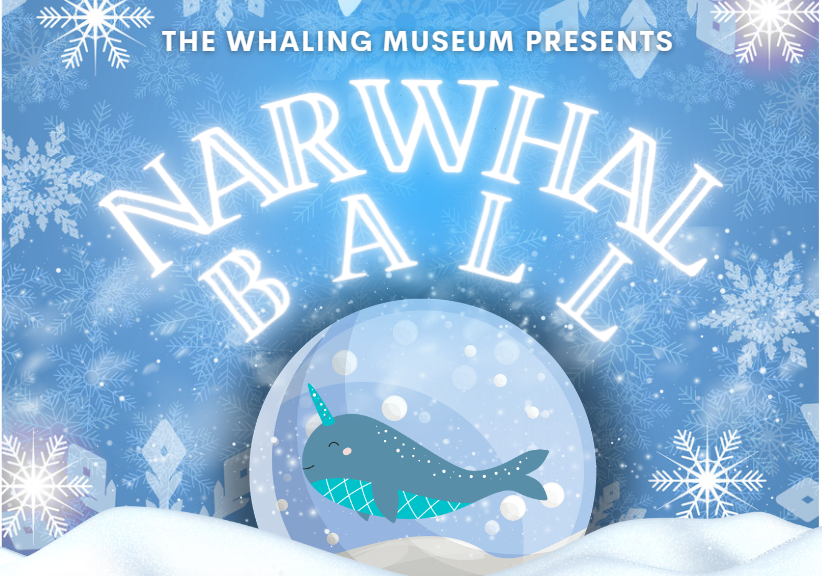
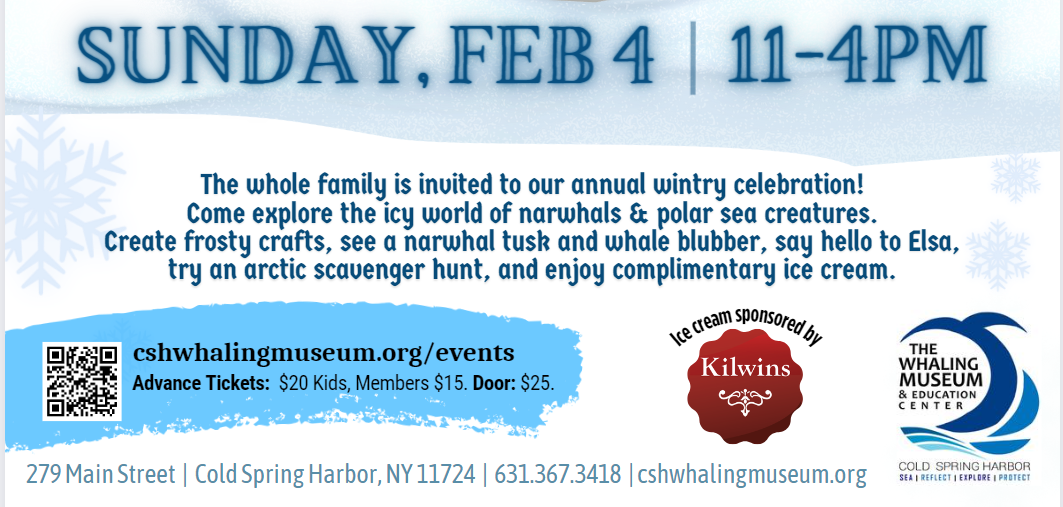

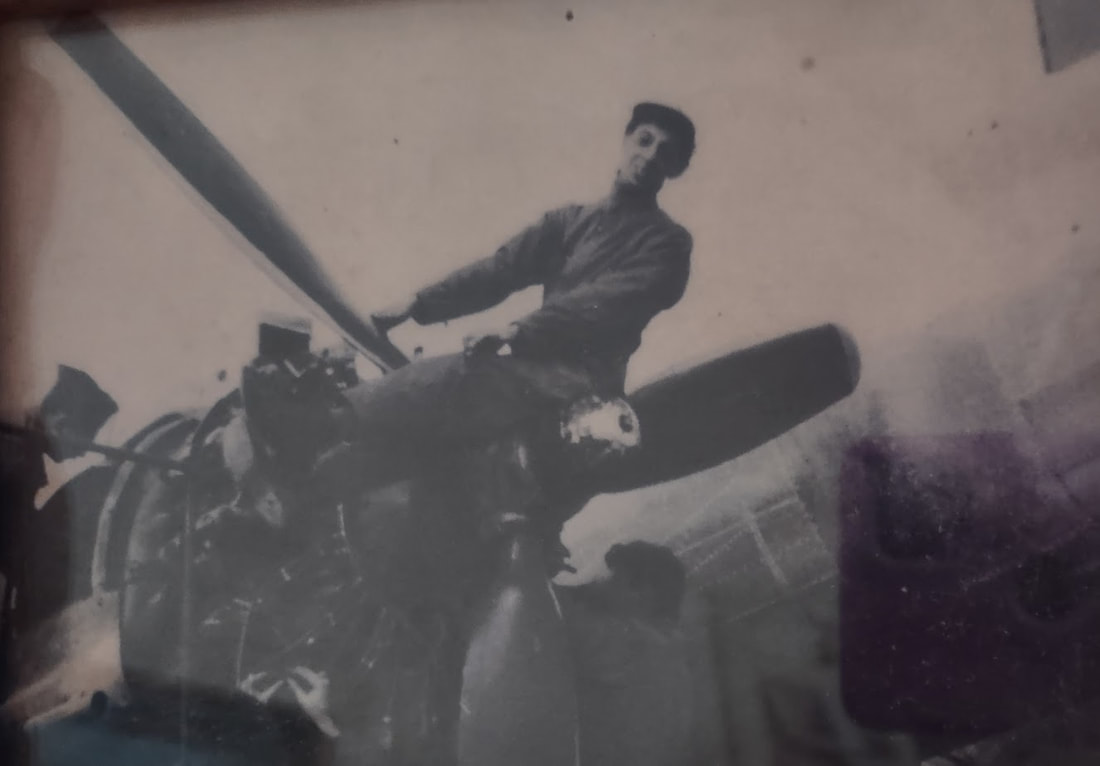
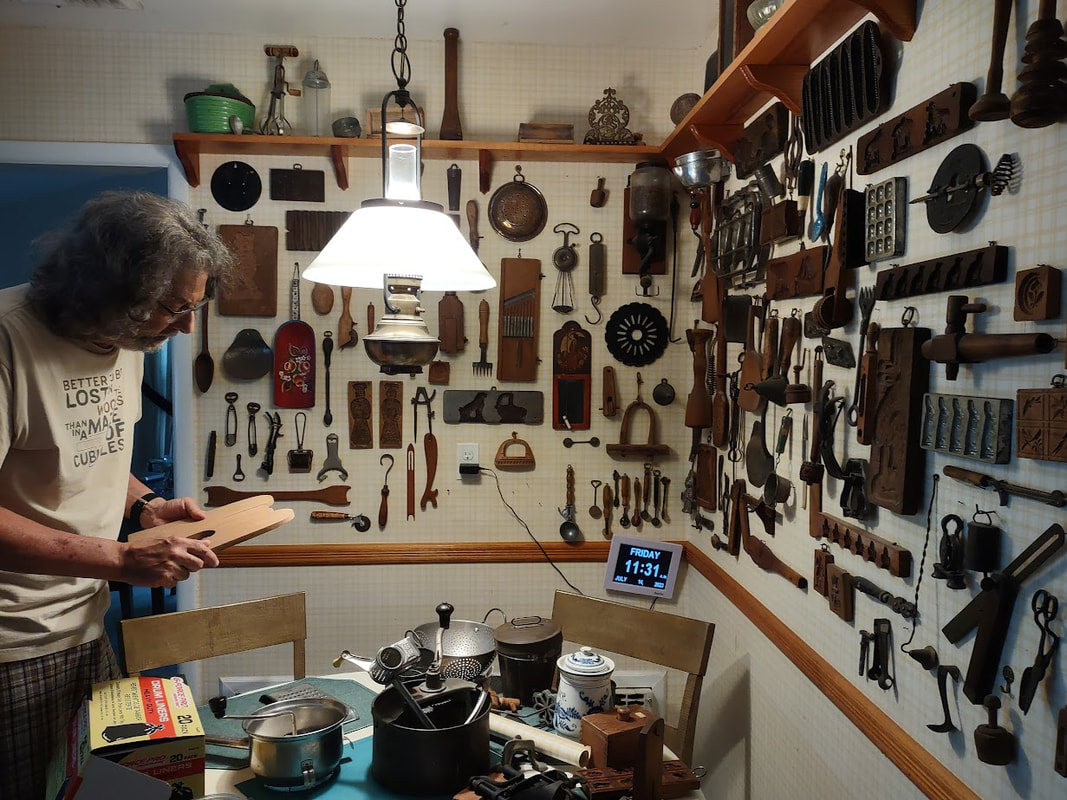
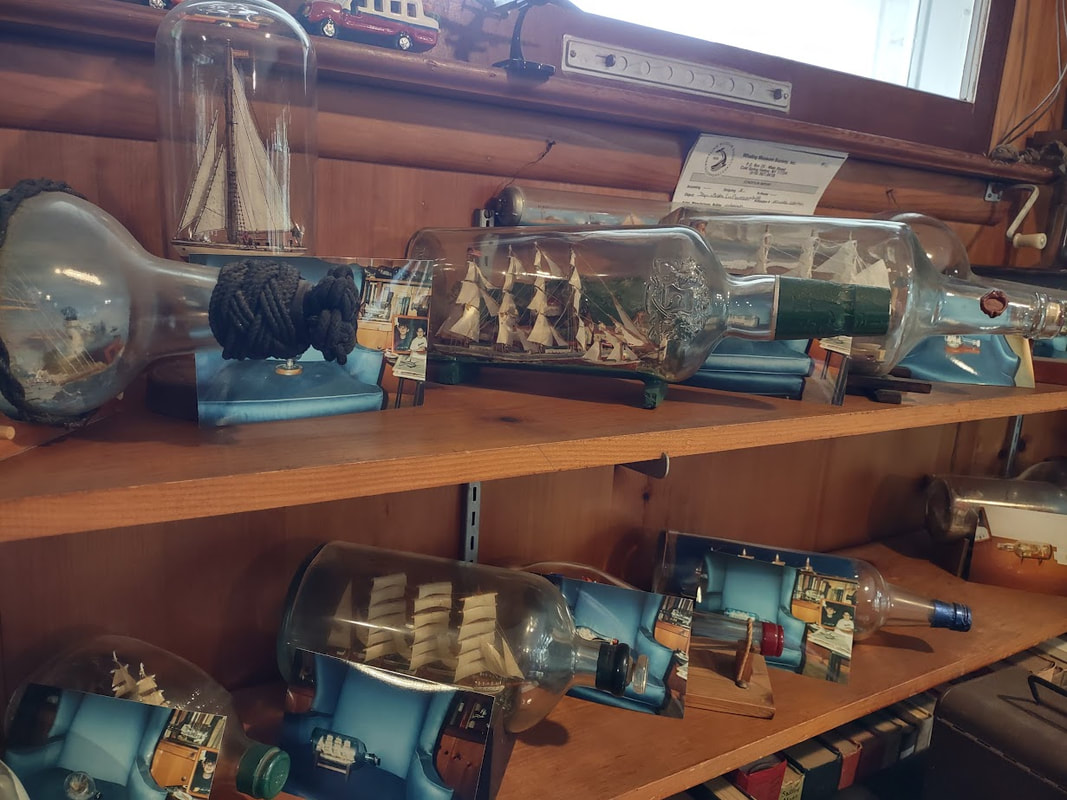
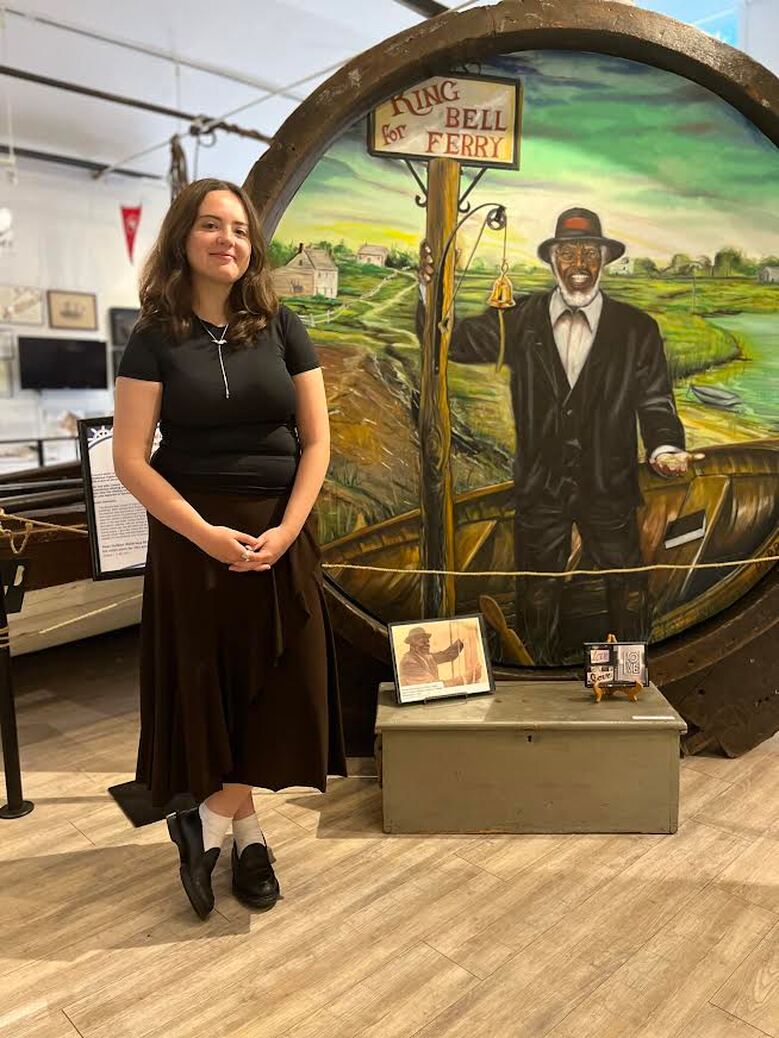


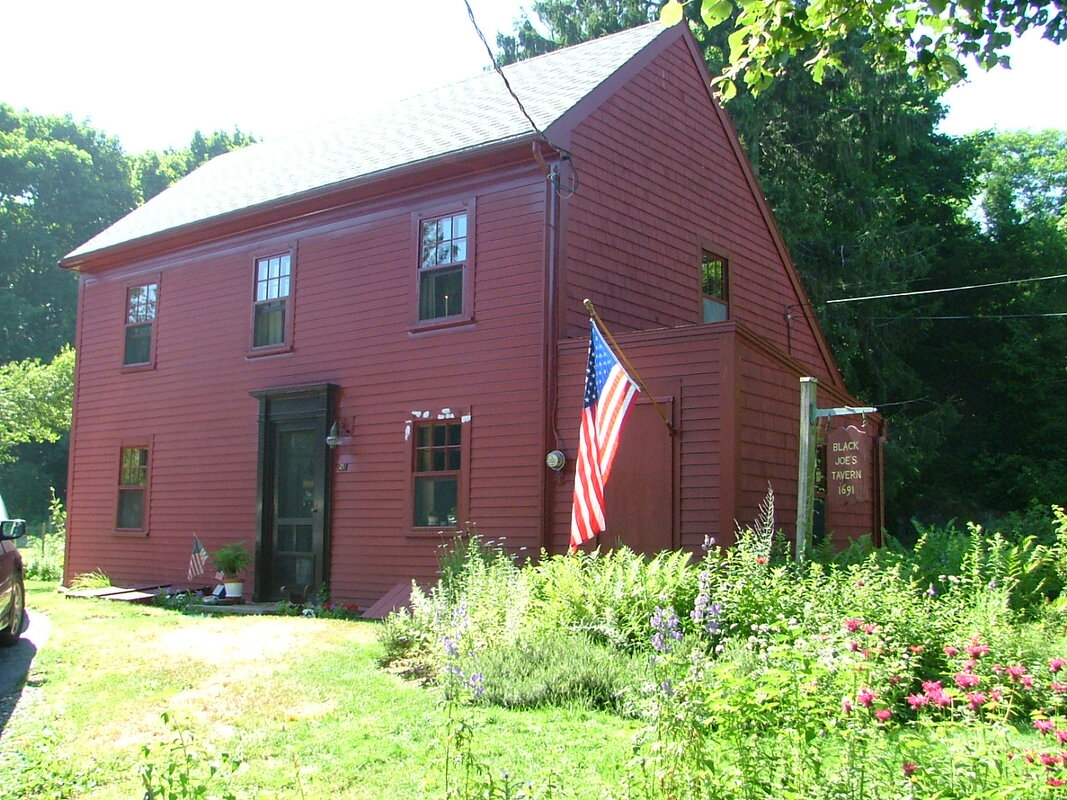
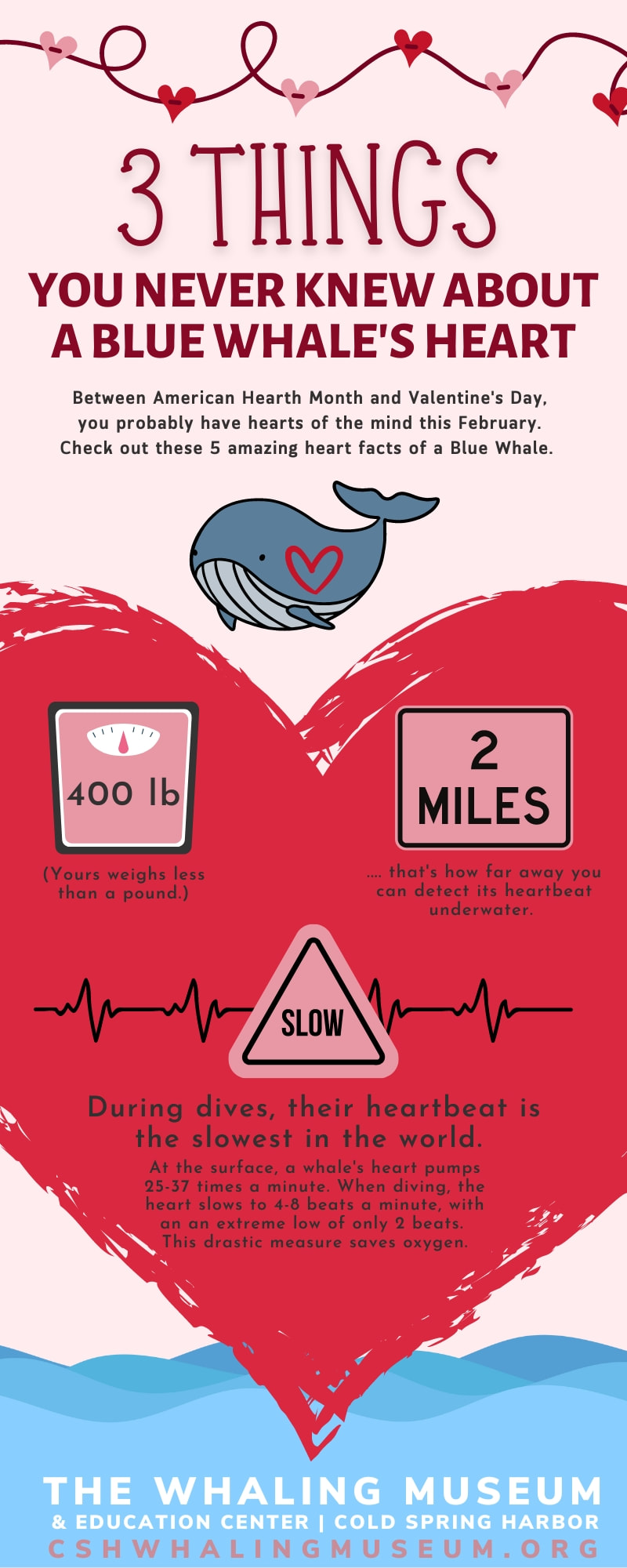
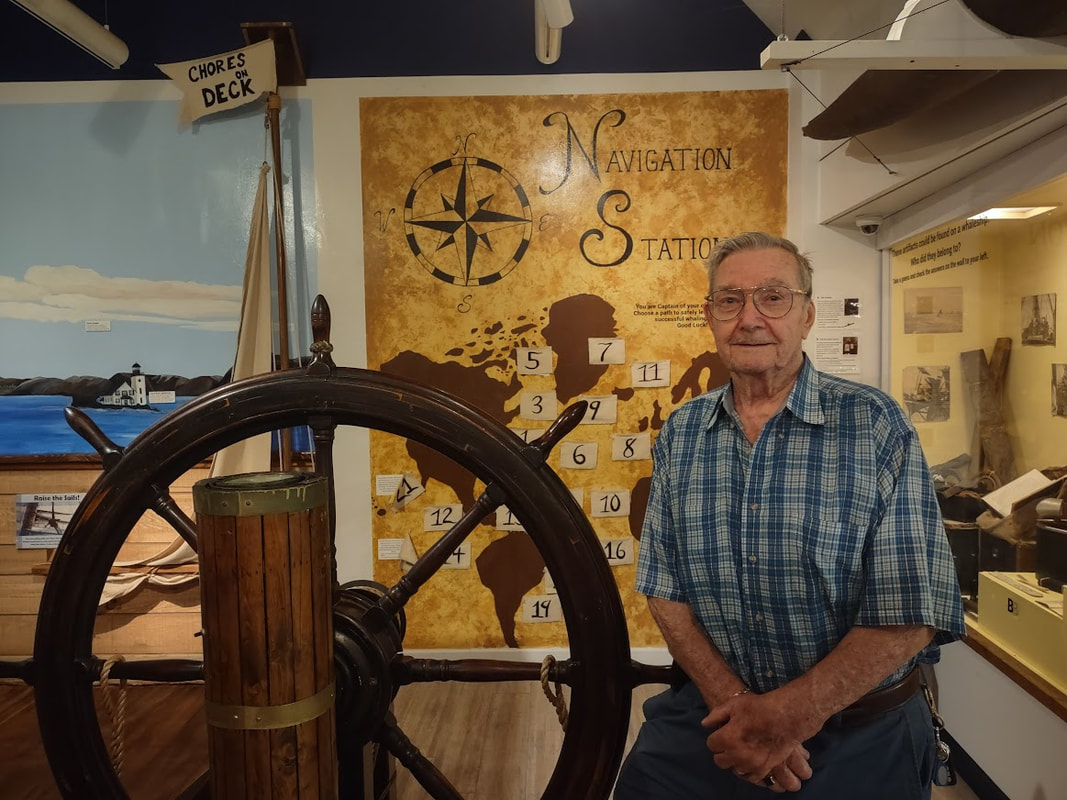
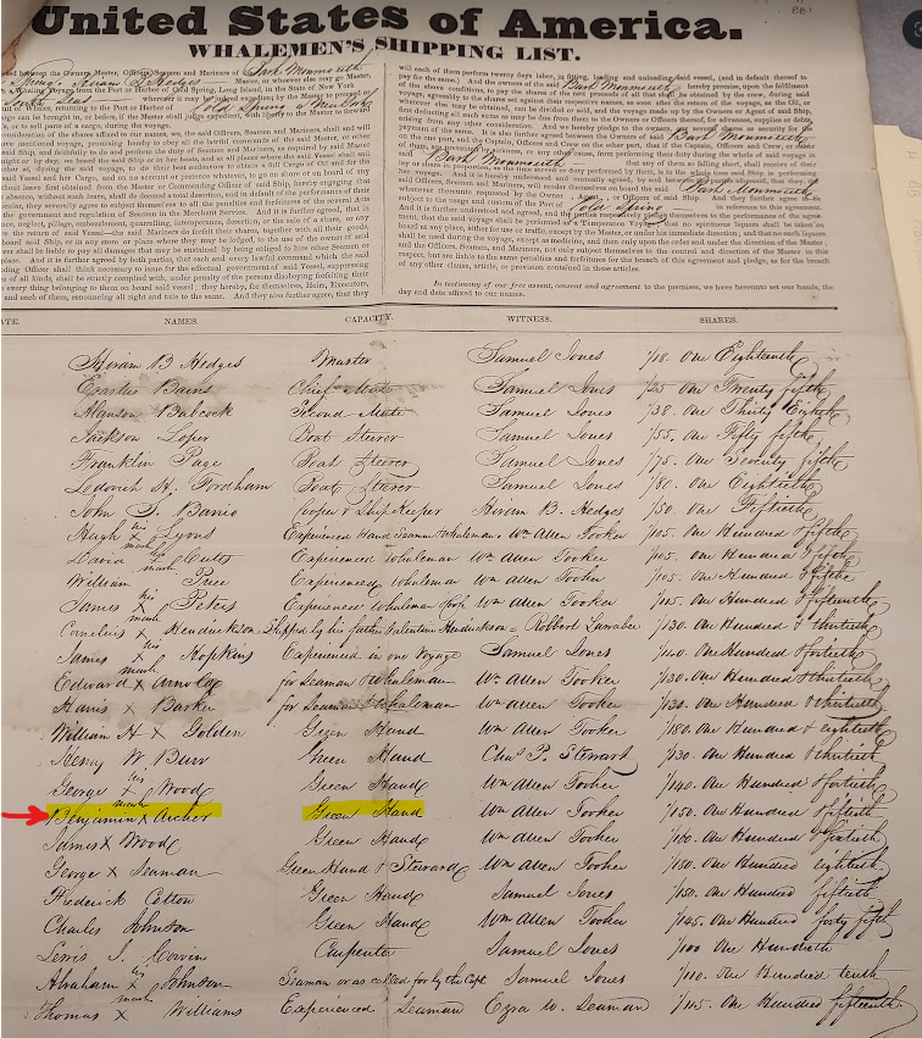
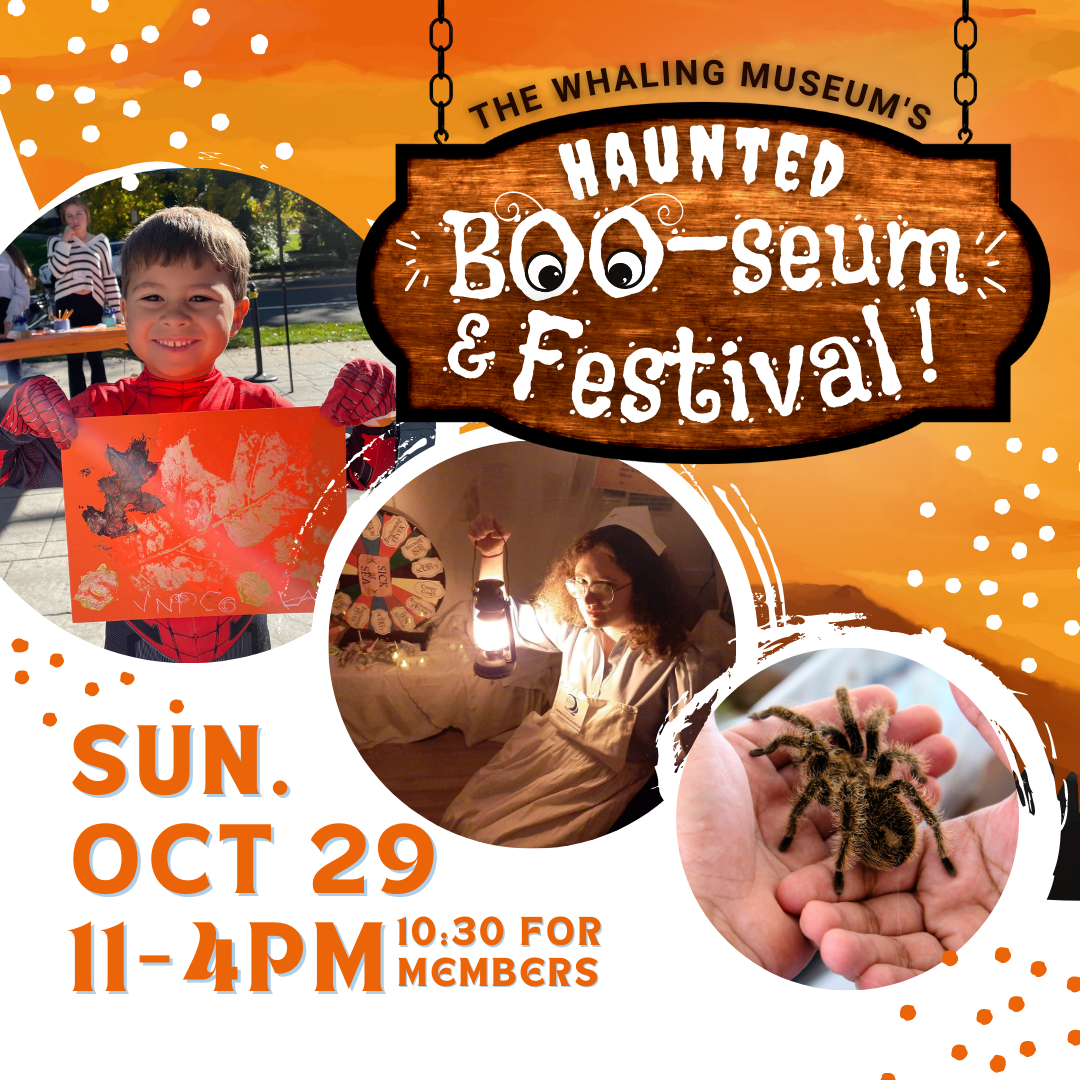
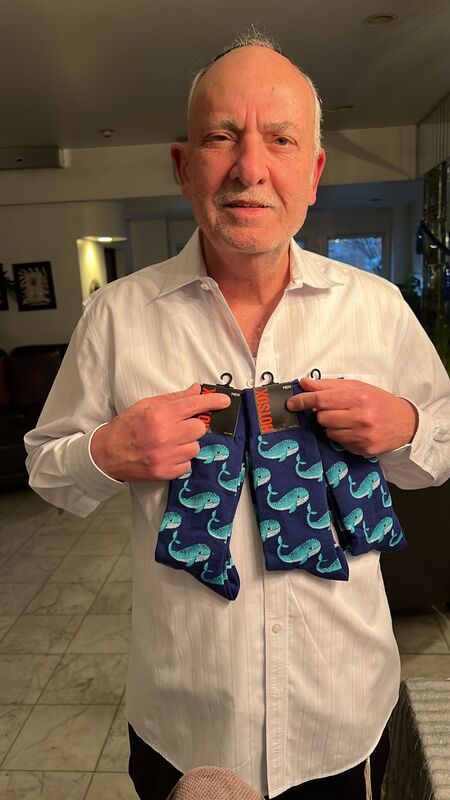
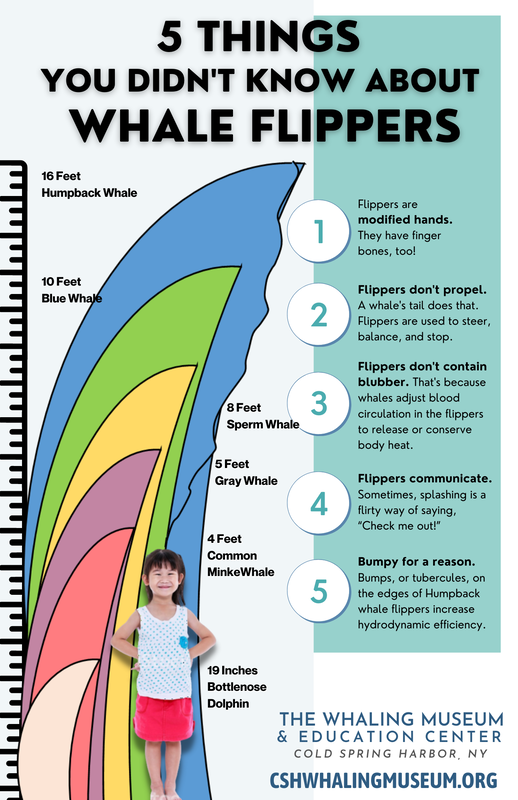
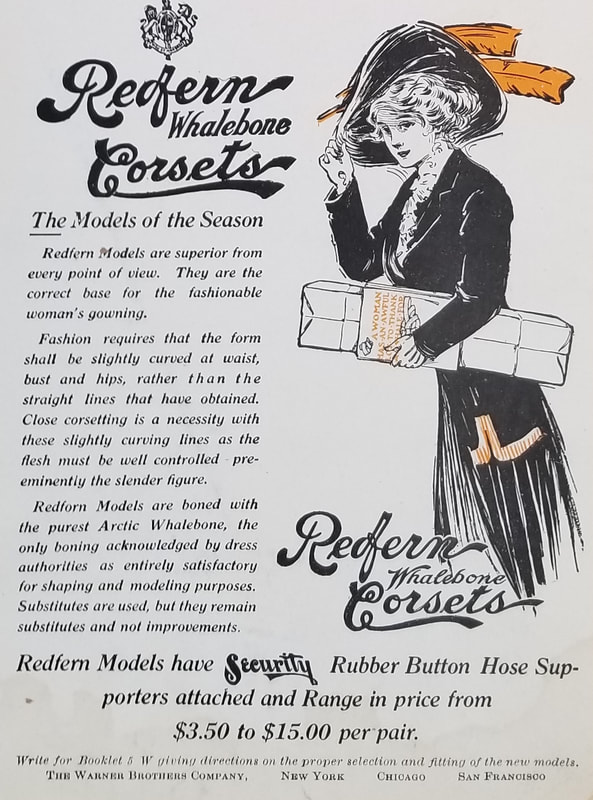
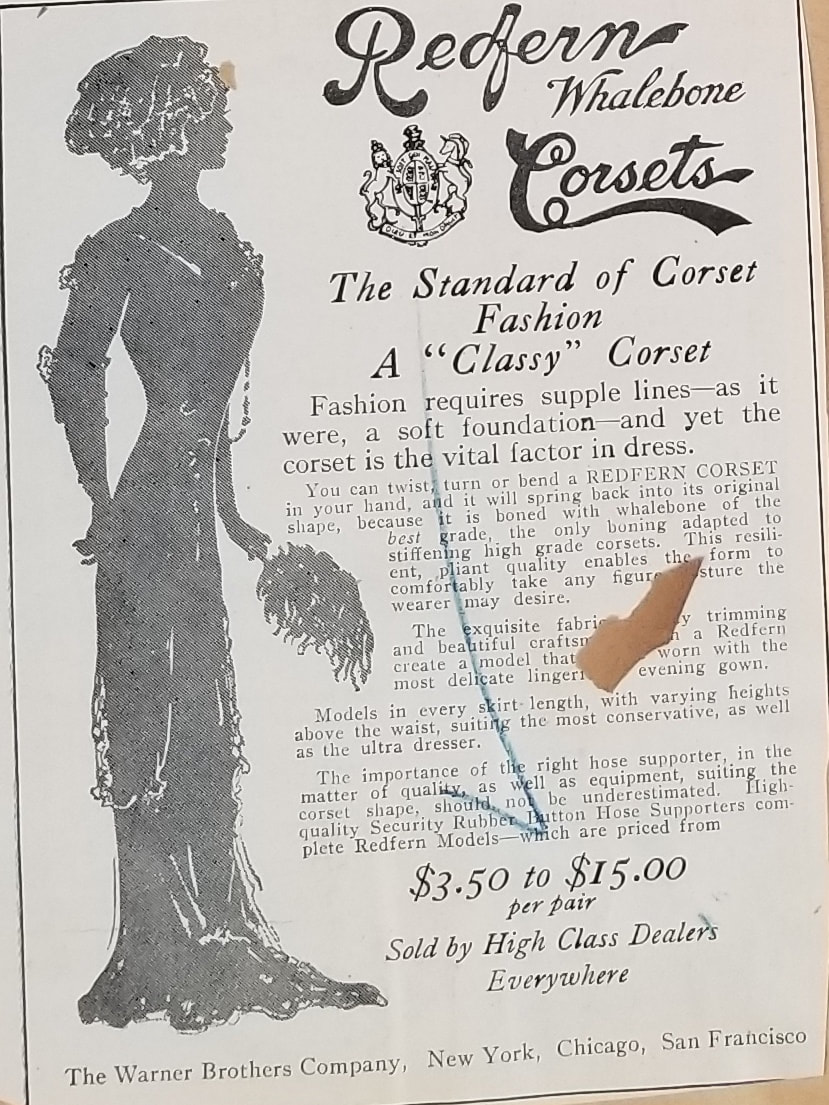
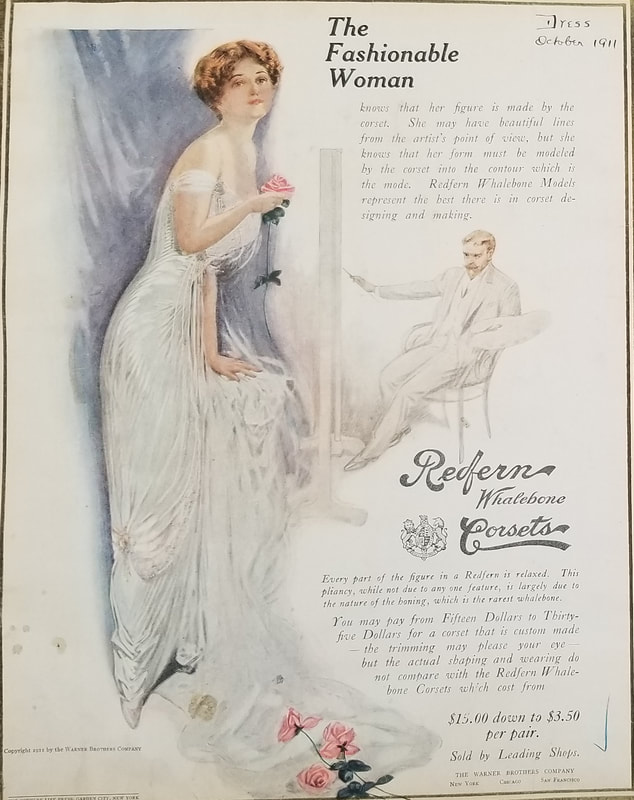

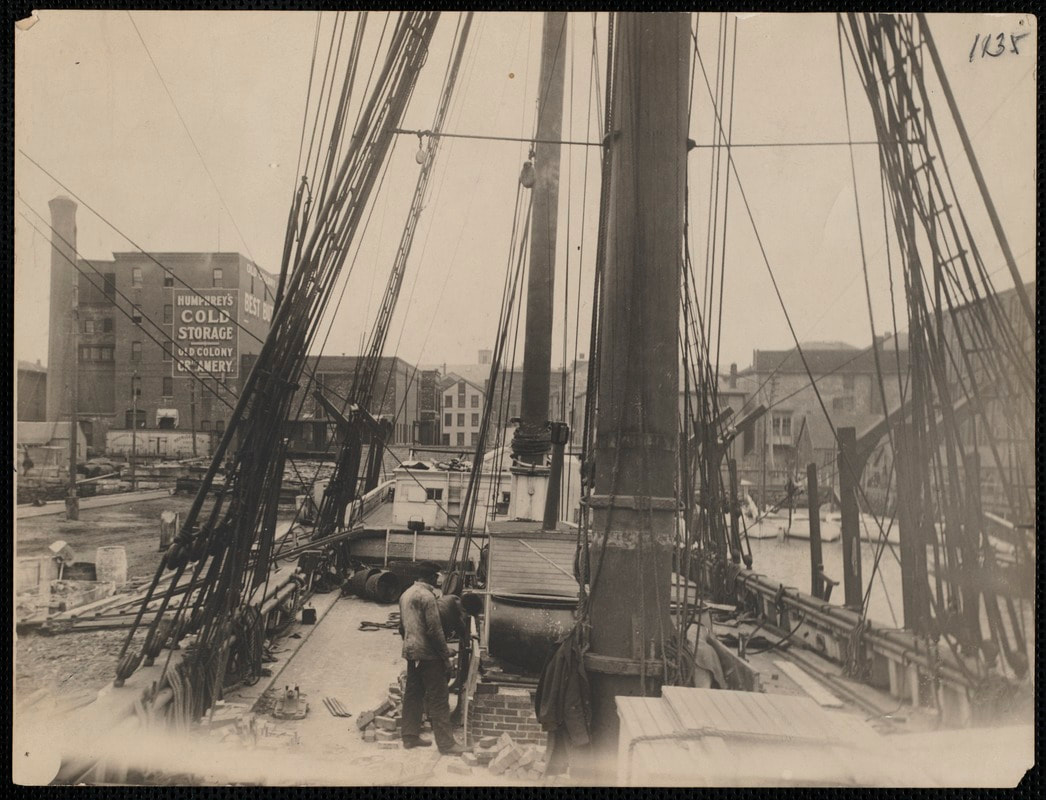
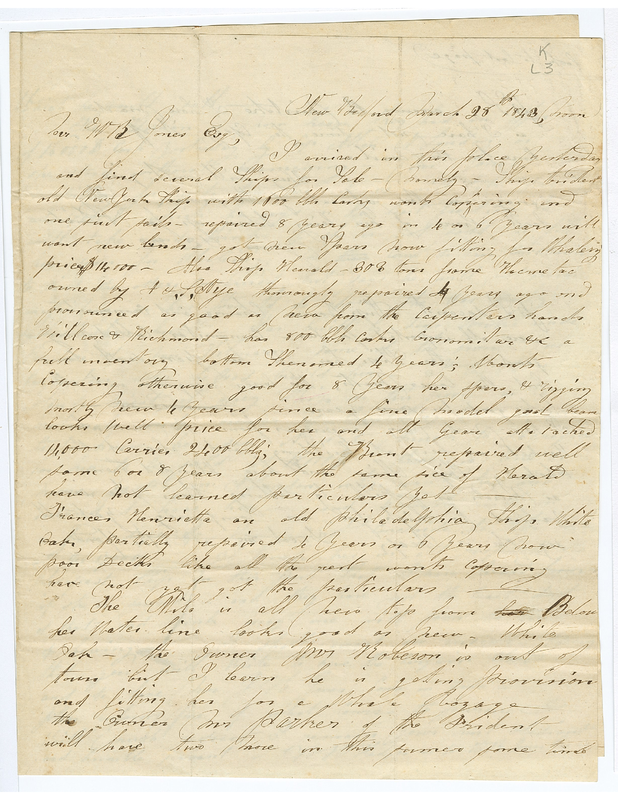
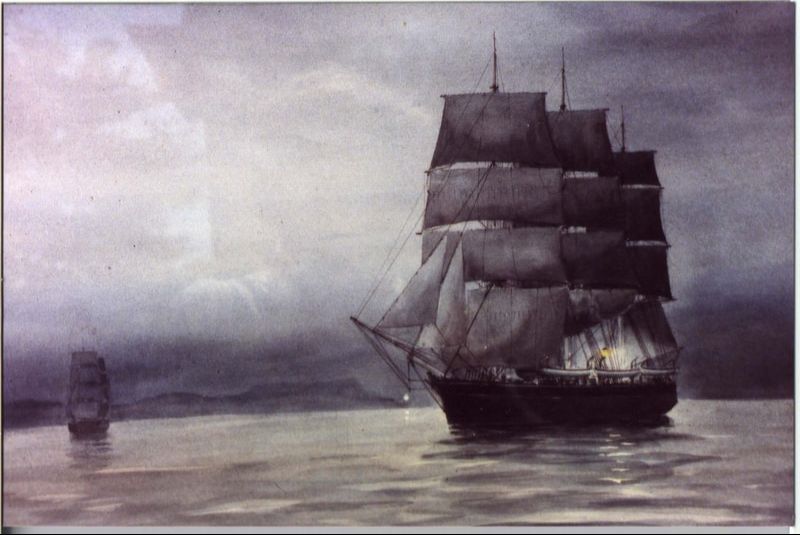
 RSS Feed
RSS Feed
